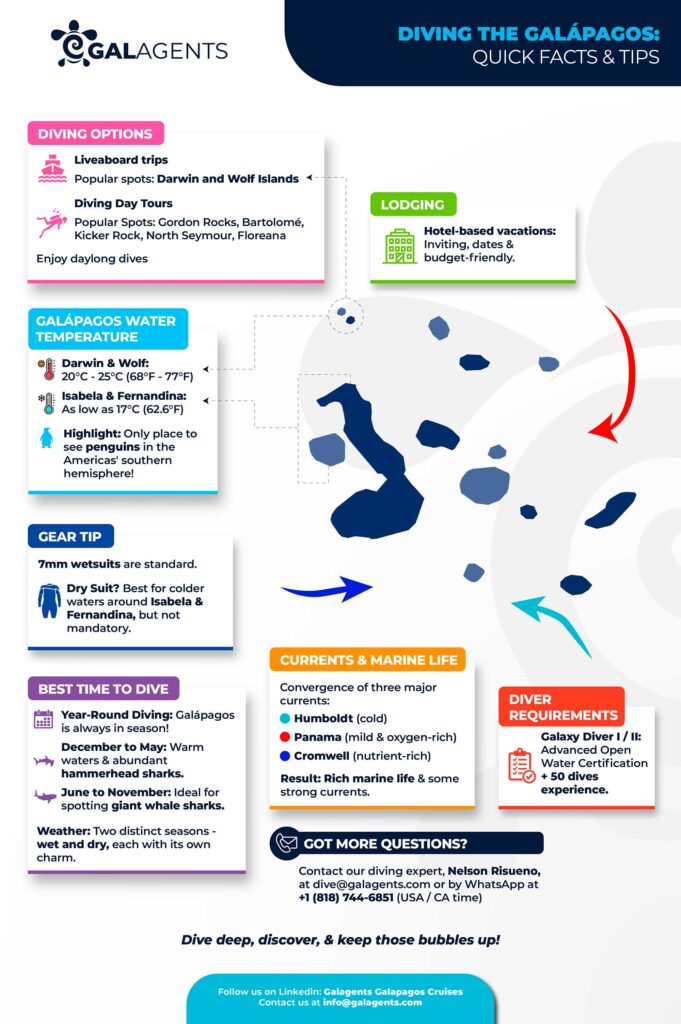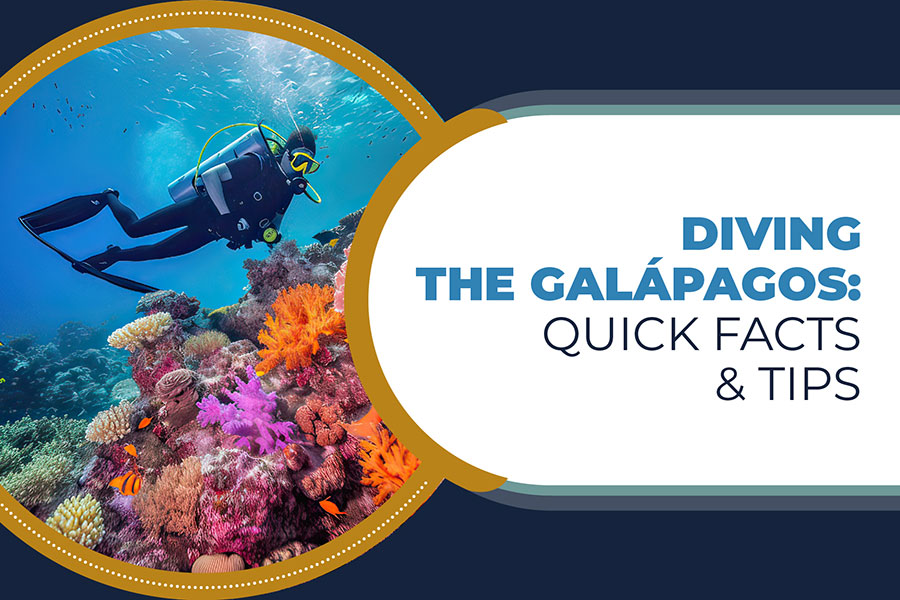Hey scuba divers, vacation planners, and wanderers!
Last August 4th and 5th, 2023, we dove right into the action at the Scuba Diving Show Brazil in Sao Paulo. What a great time, new friends, and exploration of the magical underwater world of our planet!
We couldn’t wait to share the Galápagos Islands’ extraordinary beauty with the world. We also showed off our comfortable liveaboard ship, the Galaxy Diver, and teased its sequel, the Galaxy Diver II.
During that time, we found that divers at varying experience levels asked similar questions during our chats. So, we thought that maybe, you or your customers have probably given some thought to them as well. Here, then, is a comprehensive examination of those vital queries:
It’s too cold to dive in the Galapagos, huh? Is a dry suit necessary?
A lot of people want to know this!
The temperature of the water surrounding Darwin and Wolf typically ranges from 20°C to 25°C (68°F to 77°F). Yet, be prepared for temperatures as low as 17 °C (62.6 °F) on the western side of Isabela Island, close to Fernandina.
Interesting fact: they are the only penguins you’ll see in the Americas’ southern hemisphere.
How about that dry suit? It could get too hot if used elsewhere, so limit its use to Isabela and Fernandina.
To consider: 7mm wetsuits are the standard issue for scuba diving in the Galapagos.
Galápagos: Appropriate for novice, intermediate, or open-water inexperienced divers?
The convergence of three ocean currents is mainly responsible for the extraordinary diversity of marine life in the Galápagos.
- The cold Humboldt current, which flows in from Chile and Peru
- The mild, oxygen-rich Panama current,
- The nutrient-rich Cromwell flows from the depths of the Pacific Ocean.
Strong currents may result from this combination, especially around Darwin and Wolf Islands. We do require divers to have an Advanced Open Water certification and 50 dives under their belt before they may dive aboard our Galaxy Diver.
No amateurs allowed in Galápagos, eh?
Nope!
Although experienced divers are catered to more on a liveaboard trip, both intermediate and beginner divers are encouraged to visit Galápagos. Even after taking a nature cruise, many scuba divers choose to go on a daylong diving trip to Santa Cruz, San Cristóbal, or Isabela.
What about the lodgings? Hotel-based land vacations are inviting and budget friendly too.
Popular diving spots? Gordon Rocks, Bartolomé, Kicker Rock, North Seymour, and Floreana, among others.

When is the ideal time to experience the enchantment of the Galapagos underwater? Maybe all year long?
We received this question a LOT throughout the event! People from all over the world keep asking when the best time is to dive into the Galapagos. What is our mantra? “The Galapagos are in season all year long!” You’re in for a treat if you dive in during any month.
But if you’re interested in the details, here is the info:
Warm temperatures offer good vision but may be a little deficient in nutrients. However, don’t let it stop you! Imagine this: From December through May, hammerhead shark schools—sometimes numbering over a hundred—appear. Water is warm, averaging 25–27°C (78–80°F).
But if the thought of seeing enormous whale sharks makes your heart race, schedule your trip between June and November. These monsters may grow to lengths of almost 12 meters. Incredible, isn’t it?
To put it simply, Galapagos is the place to go for diving and natural wonders YEAR ROUND. Each season has its own unique appeal that promises an epic experience with its two starkly different seasons, the wet and the dry.
Do you have further questions regarding scuba diving in the Galápagos, the circumstances there, or the many kinds of trips available? Here’s the map to the hidden treasure:
- Check out our FAQ guide first!
- Get a copy of the Guide to Marine Species of the Galápagos Islands
- Check out the weather and diving conditions section.
- Contact our scuba expert agent, Nelson Risueno, at [email protected] or +1 (818) 744-6851 (USA/California) by email or WhatsApp.
Dive in, explore, and keep the bubbles coming! 🐳🤿🌊

